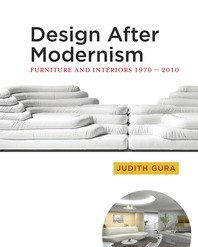
Design After Modernism
Furniture and Interiors 1970-2010
27 April 2012
Territory Rights — Worldwide.
Description
Bauhaus, Postmodernism, High Tech, and Green Design: Judith Gura explains the important movements, forms, and furnishings from the 1950s to the present.
Those guidelines are no longer relevant. As Midcentury Modernism has receded into history, Modernism has been redefined, reenergized, and in the process transformed. Today it embraces a cornucopia of design in an almost limitless range of materials: design studios are laboratories for experimentation; design concepts can be as important as finished objects; and furniture has crossed barriers to become a new art form. Tools and technologies never before possible have provided new approaches to decoration, and may incorporate influences from the past. The design profession has broadened its horizons; interiors and furniture are being created by architects, interior designers, furniture makers, industrial designers, artisans, artists, and even fashion designers.
Design After Modernism offers an overview of developments in design over the past four decades—some evolutionary, some expected, and some extraordinary. It identifies the diverse influences that have generated new directions in design and illustrates many of the most characteristic, most noteworthy, and most innovative objects in this rich and variegated mix. All are representative of their time, and many of the earlier designs have already gained iconic status. Of the more recent ones, whether or not they will be admired in decades to come is something that only time will tell.
Reviews
"
Discover all that is exciting about contemporary styling in this fabulous book. . .
" — Essential Kitchens, Bathrooms, Bedrooms Magazine"[P]rovides surprising breadth and depth in a compact volume. . . . [M]akes the greatest scholarly contribution with a wide range of environmentally responsible approaches to design. Recommended." — CHOICE
"[A] treat to the eye and intellect." — modernism magazine
"A useful and invaluable resource . . . . A wonderful scholarly work . . . . [T]he visuals and the text supplement each other beautifully, offering various readers different entry points and degrees of accessibility." — ARLIS/NA Reviews




